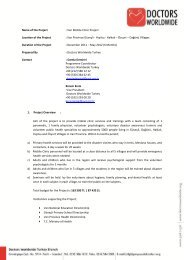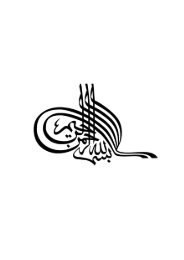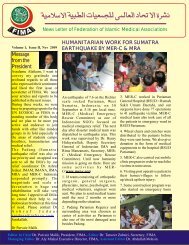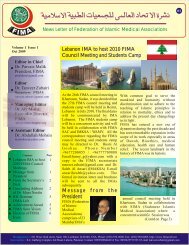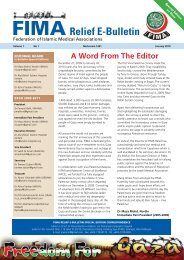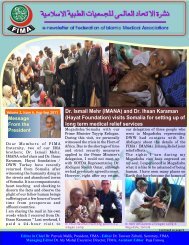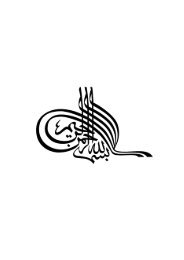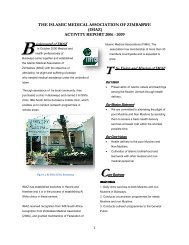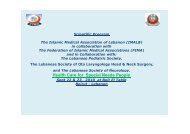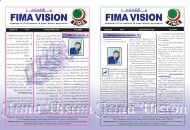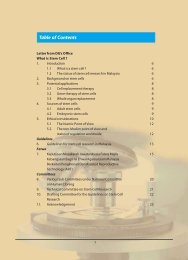FIMA Year Book 2009 - Federation of Islamic Medical Associations
FIMA Year Book 2009 - Federation of Islamic Medical Associations
FIMA Year Book 2009 - Federation of Islamic Medical Associations
Create successful ePaper yourself
Turn your PDF publications into a flip-book with our unique Google optimized e-Paper software.
Muslim Contributionsand inventions. Very unlike theEuropean Renaissance researchers whopursued knowledge with vigor to provethat God (aka the Church) was wrong,the Muslim scientists and researchersdrew closer to the Creator the more theydiscovered. Indeed Allah made it clearin the Qur’an that those believers withknowledge are not the same as thosewithout it (20) . Establishing harmonybetween the human reasoning and theverses <strong>of</strong> the Glorious Qur’an was one<strong>of</strong> the mostimportant catalysts for theinsatiable thirst for knowledge at thattime. Muslim scholars studied varioustypes <strong>of</strong> sciences from various sourcesto identify the relation between theuniverse and humans on one handand the Creator on the other. Texts <strong>of</strong>ancient Greek, Persians and Indianswere translated by Muslim scholars andfrom this healthy cross fertilization theydeveloped their own philosophy andextended the frontiers <strong>of</strong> knowledge.The Muslims’ earlier contributions thushelped create the foundation for thephilosophical basis <strong>of</strong> the EuropeanRenaissance which was to follow 21 . TheEuropeans took inspiration from the<strong>Islamic</strong> philosophy which constantlyencouraged scientific inquisitivenessand eventually paved the way fora large number <strong>of</strong> discoveries madeby the Muslims. The Europeanstook inspiration from the <strong>Islamic</strong>Renaissance a few centuries earlier.This made it possible for the Europeansto present new, radical ideas withoutconsulting religious fundamentalistsand potential opponents, the RomanCatholic Church, at that time. Howeverdespite its remarkable emergence andcontributions, several factors andevents culminated in the fall <strong>of</strong> <strong>Islamic</strong>civilization and contributions <strong>of</strong> theMuslims to the development <strong>of</strong> scienceand technology (22) .Lack <strong>of</strong> promotion <strong>of</strong> science in anunstable political stateState policies to promotecommunications, trade and economicprosperity pursued during the earlycenturies <strong>of</strong> Islam, helped in promotingthe demand for science and technology.The <strong>Islamic</strong> caliphate <strong>of</strong> the Umayyadfrom the 7 th Century C.E. showed aninterest in science. It translated thescientific tradition <strong>of</strong> late antiquitybut went further by elaborating andexpanding on it. The consequencewas while Europe was still in the DarkAges, Muslim scholars were already atthe age <strong>of</strong> philosophical and scientificdevelopment. Khalid bin Yazid (one<strong>of</strong> the early Umayyad princes at theend <strong>of</strong> the 7th century) encouragedMuslim scholars to study medicineand chemistry by donating his treasurefor the cause. He also encouragedtranslation <strong>of</strong> several Greek and Copticmedical books into Arabic.The Abbasid Caliphs (8th century)followed the traditions and encouragedthe translation <strong>of</strong> Persian medicalknowledge into Arabic. New ideaswere also brought from India andChina not only in medicine butalso in mathematics, chemistry and<strong>FIMA</strong> <strong>Year</strong><strong>Book</strong> <strong>2009</strong>108




